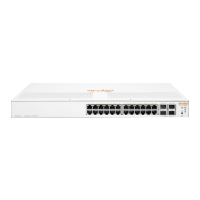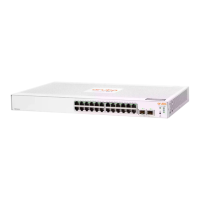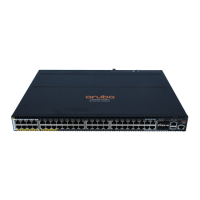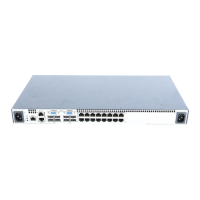Data type Configuration options Default Description
Type
3,3
N/A Always Enabled Shows the network
address type.
Address
55
Default or Configured Uses a default address selection method unless an
optional address is configured. See Remote
management address on page 221.
System Name
33
Enable/Disable Enabled Uses the switch's
assigned name.
System Description
33
Enable/Disable Enabled Includes switch model
name and running
software version, and
ROM version.
Port Description
33
Enable/Disable Enabled Uses the physical port
identifier.
System capabilities
supported
3,3
Enable/Disable Enabled Identifies the switch's
primary capabilities
(bridge, router).
System capabilities
enabled
3,66
3
Enable/Disable Enabled Identifies the primary
switch functions that are
enabled, such as routing.
1
The Packet Time-to-Live value is included in LLDP data packets.
2
Subelement of the Chassis ID TLV.
3
Populated with data captured internally by the switch. For more on these data types, refer to the IEEE P802.1AB Standard.
4
Subelement of the Port ID TLV.
5
Subelement of the Remote-Management-Address TLV.
6
Subelement of the System Capability TLV.
Remote management address
The switch always includes an IP address in its LLDP advertisements. This can be either an address selected by
a default process or an address configured for inclusion in advertisements. See IP address advertisements on
page 222.
Debug logging
You can enable LLDP debug logging to a configured debug destination (Syslog server, a terminal device, or both)
by executing the debug lldp command. (For more information on Debug and Syslog, see the "Troubleshooting"
appendix in this guide.) Note that the switch's Event Log does not record usual LLDP update messages.
Options for reading LLDP information collected by the switch
You can extract LLDP information from the switch to identify adjacent LLDP devices. Options include:
Chapter 7 Configuring for Network Management Applications 221
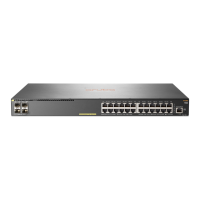
